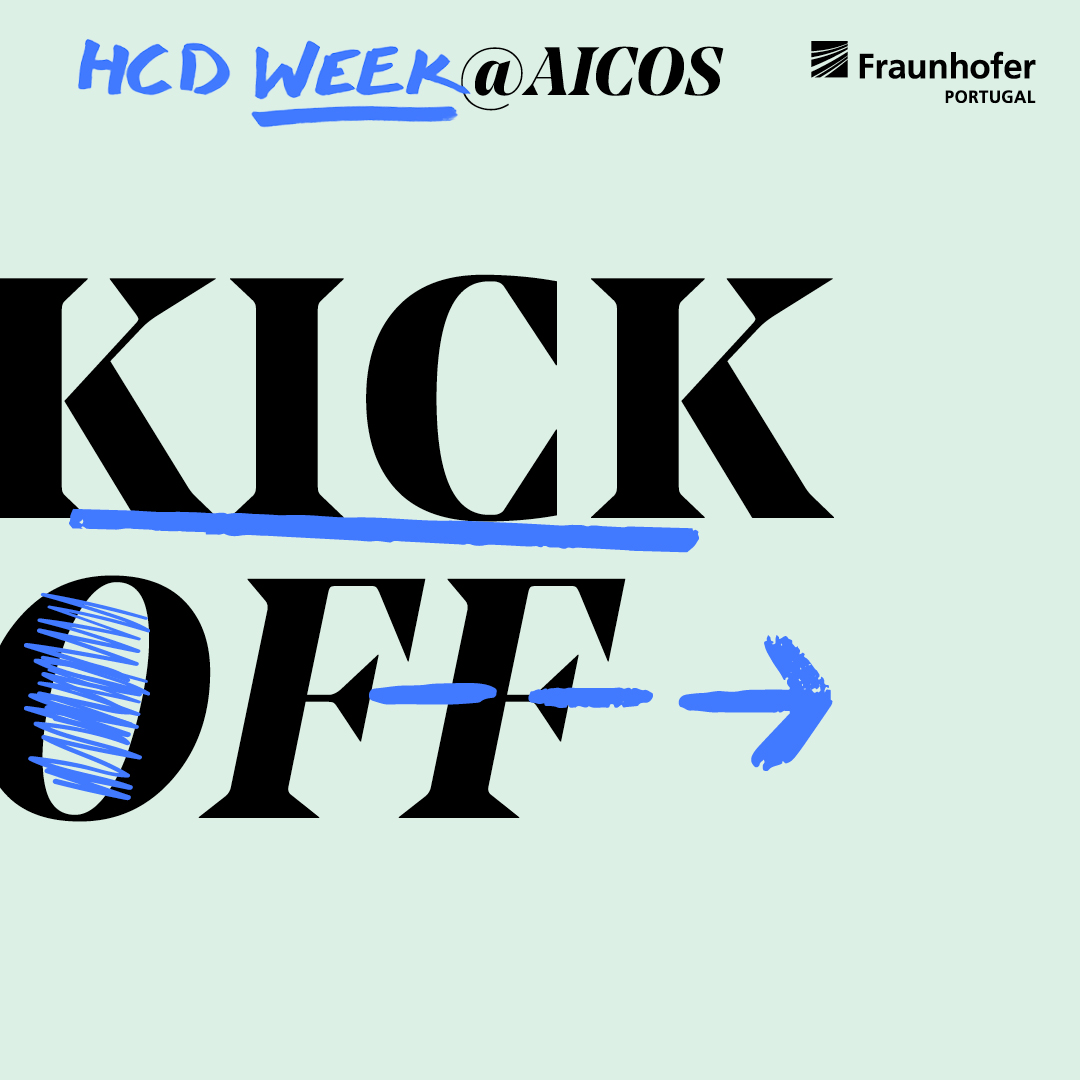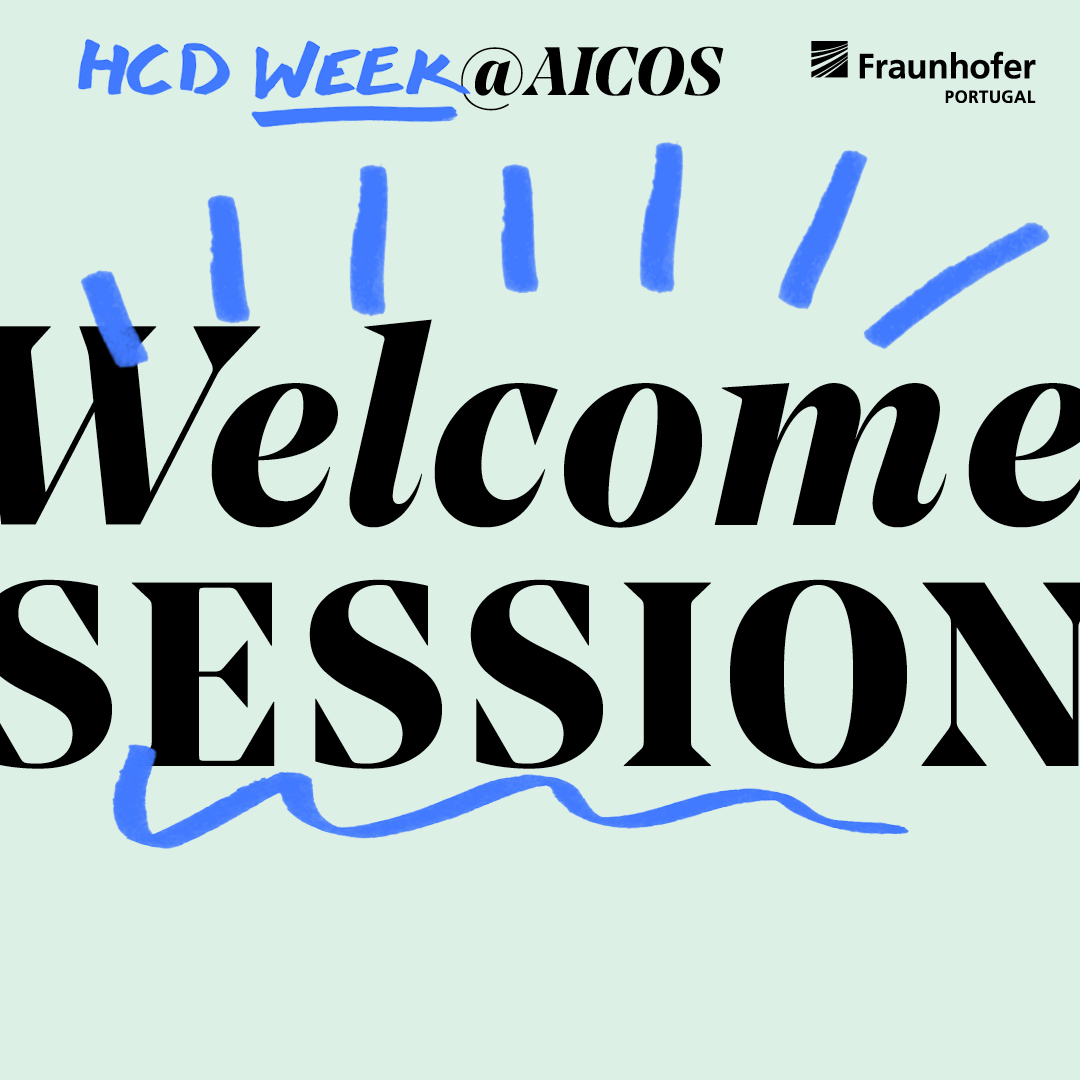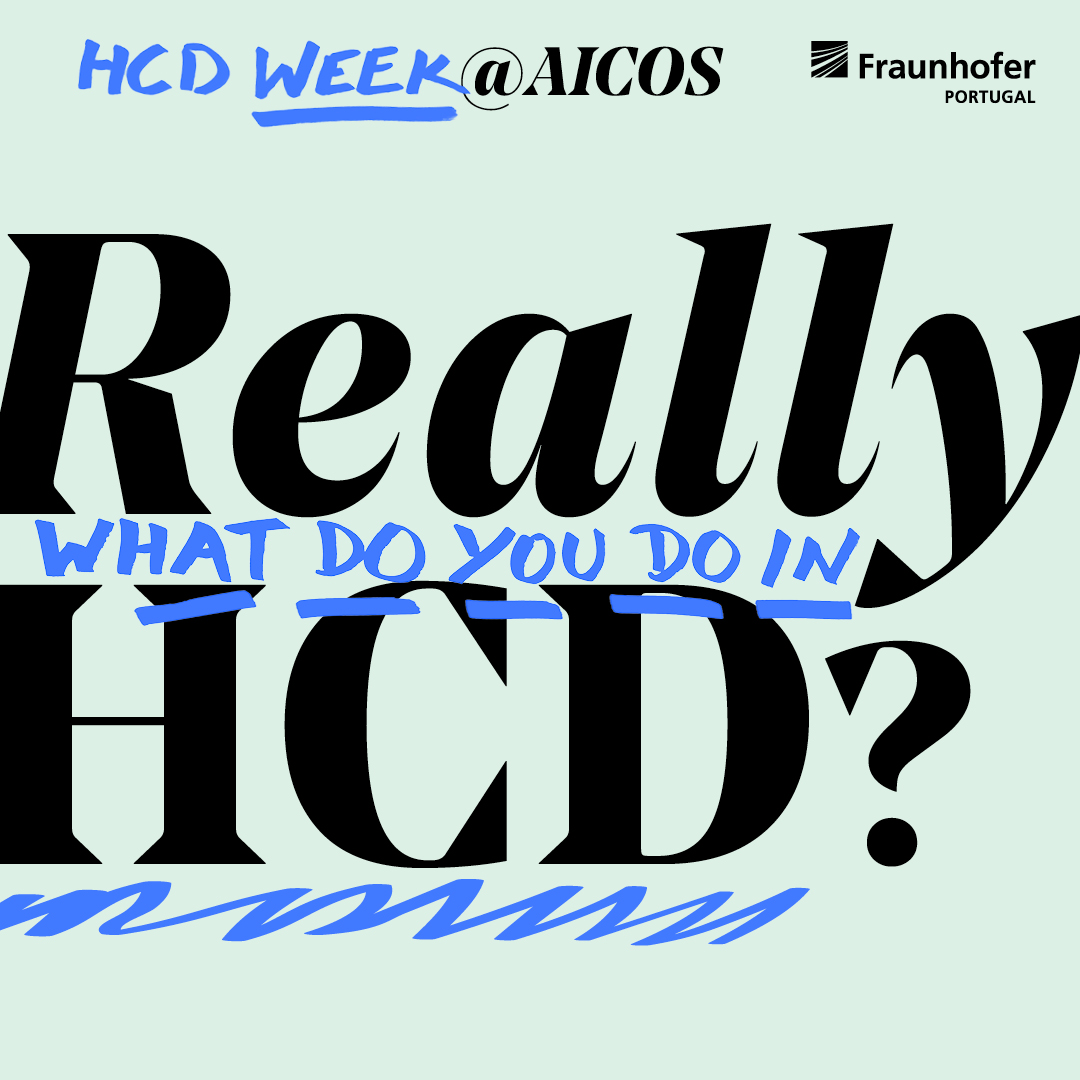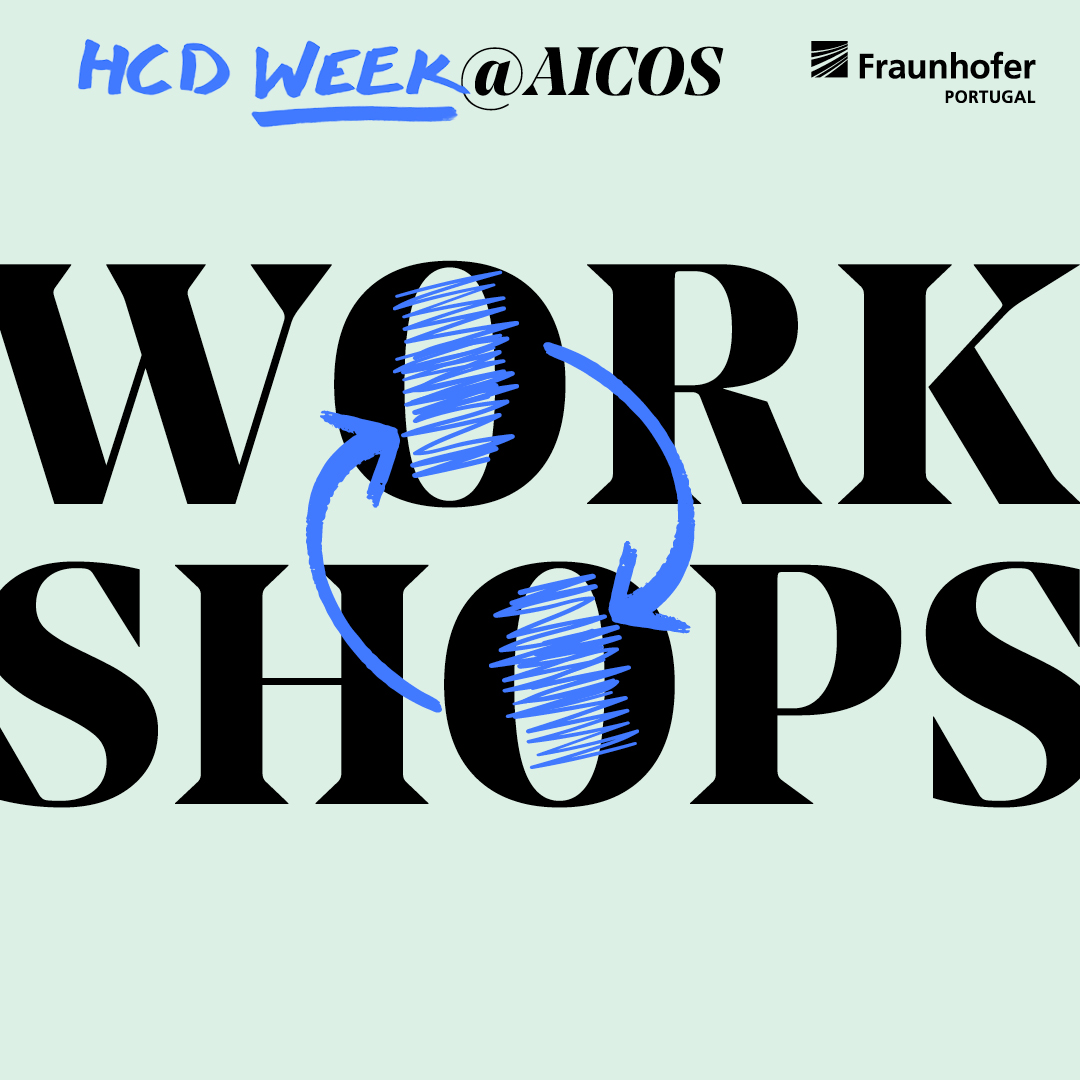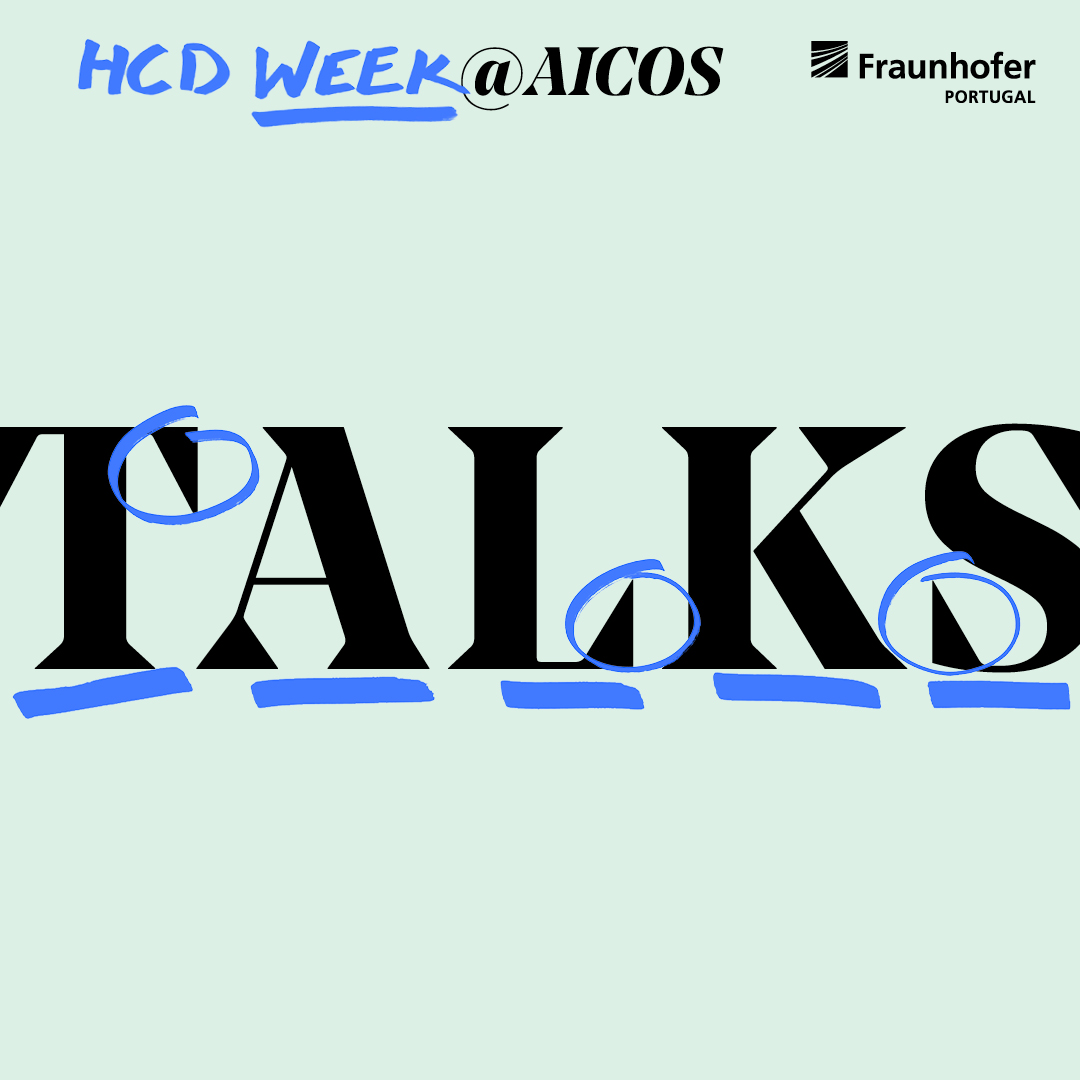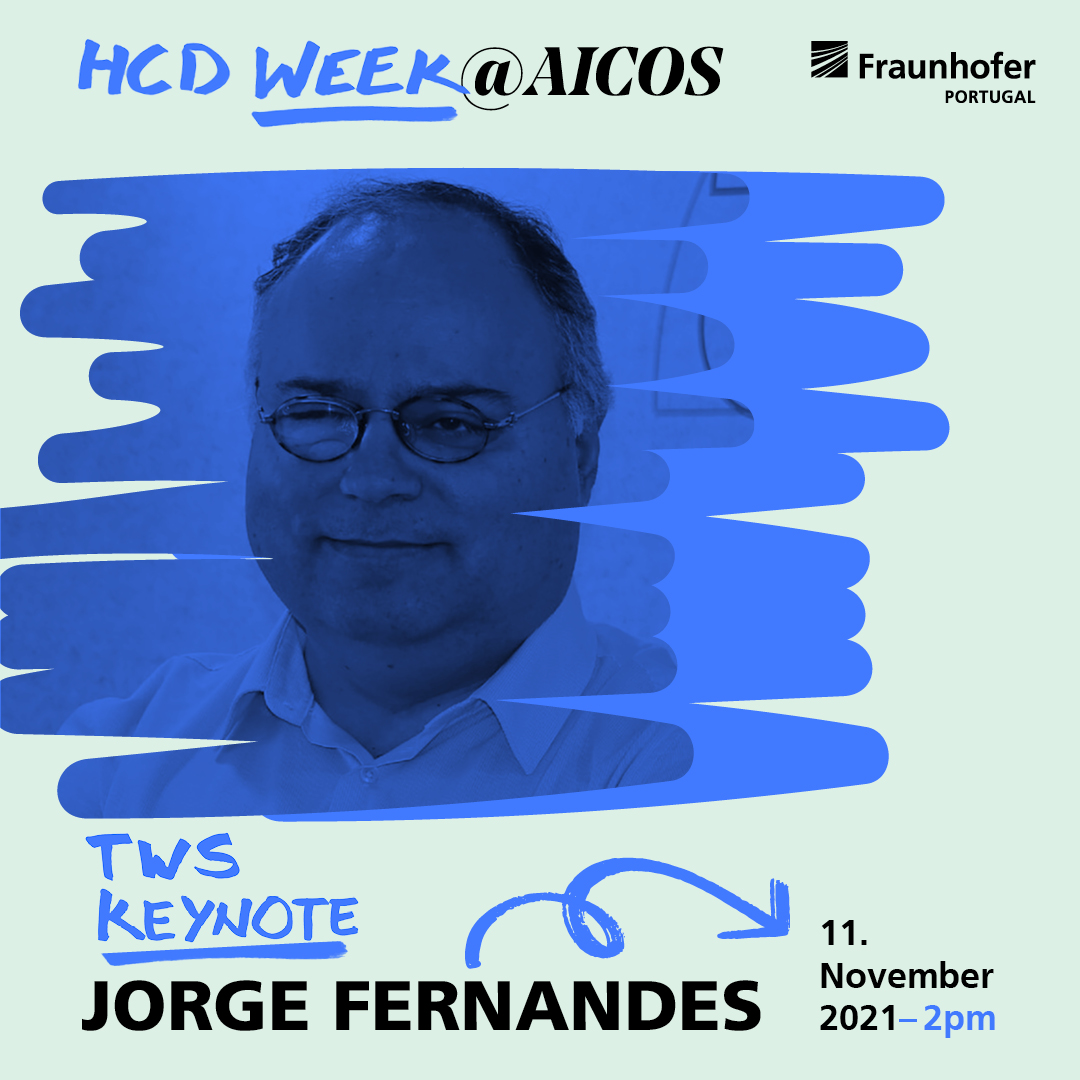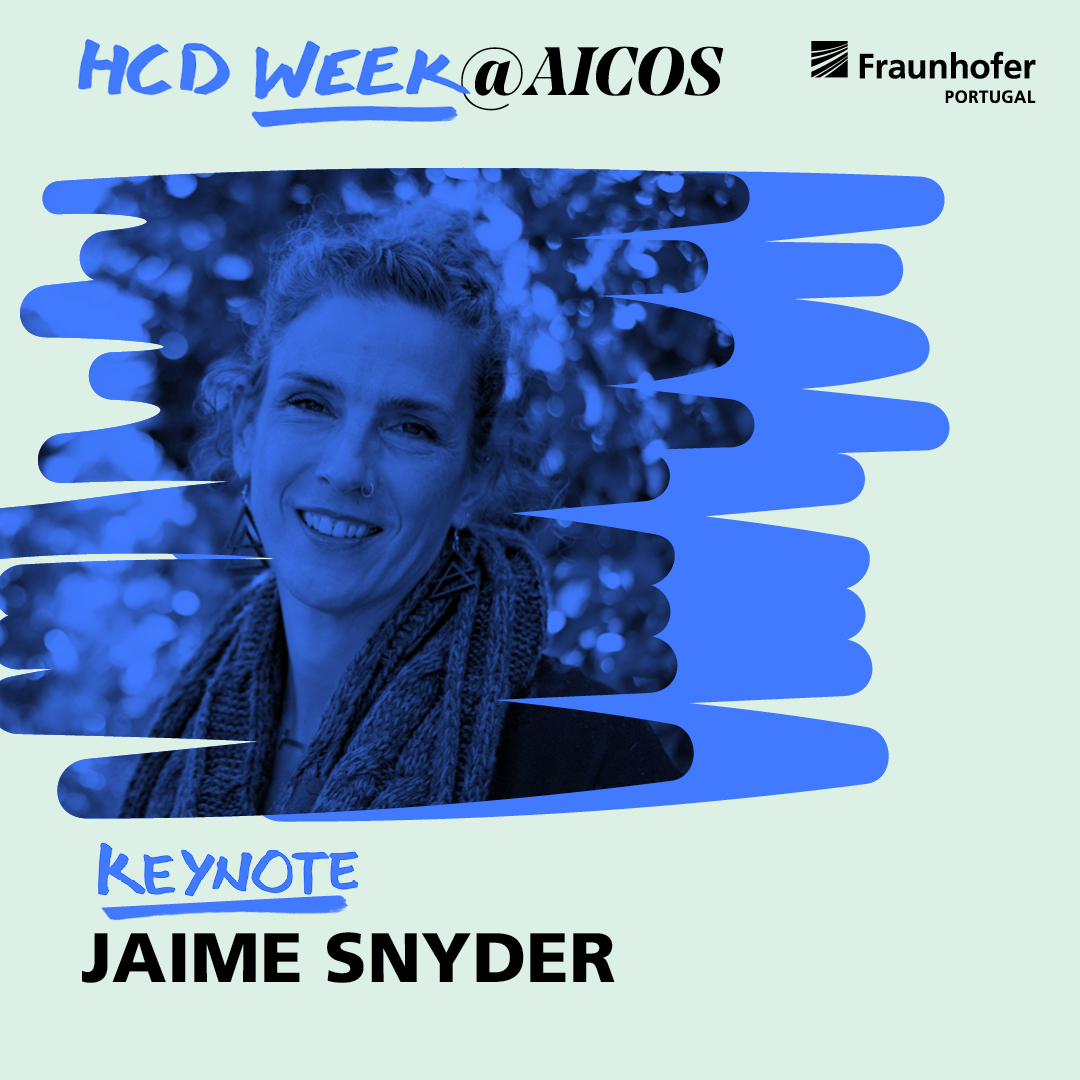HCDWeek@AICOS 2021
Tuesday, 09/11
09:00 — 13:00 GMT
Digital Fabrication: Fundamentals of Prototyping, Additive Manufacturing and Silicone Casting I
Paulo Torres, Ruben Moutinho
Designing meaningful products requires exploration and iteration of different ideas. In an early stage, materializing these ideas and test them with your users can lead to discoveries of paramount importance for better product acceptance.
In this training course, Fraunhofer AICOS introduces participants to the fundamentals of prototyping and rapid prototyping techniques such as additive manufacturing and silicone casting.
Through practical examples, we will teach how to create interactive prototypes. From simple's ones made of cardboard to highly complex ones made with moving 3D printed parts. Within this journey we will explore different additive manufacturing technologies such as FFF (Fused Filament Fabrication), SLA (Stereo Lithography Apparatus). To complement this journey, we will create a 3D printed mold for silicone or resin casting.
14:00 — 17:00 GMT
Introduction to programming for designers I - Drawing with Code
Jorge Ribeiro
Programming can be a very powerful skill on designs’ toolbox, enabling them to prototype, express, and bring their own ideas to life.
In this course, Fraunhofer AICOS aims to introduce participants to the fundamental concepts of programming. We will use JavaScript and p5.js to creatively learn these concepts by writing code to create visual explorations.
Prerequisites: No coding experience required. Each participant must bring their own laptop.
17:00 — 18:00 GMT
Challenges and lessons learned from implementing longitudinal studies for self-care technology assessment
Ana Vasconcelos
Whilst literature is rich in lessons learned from recruitment and retention of participants in longitudinal studies, papers sharing practical experience of implementing such studies with or about ICT are lacking. We discuss the challenges and lessons learned in four longitudinal studies with older adults and chronic disease patients for the assessment of self-care technology. Despite apparently prosaic, everyday challenges and potential threats to studies with non-mainstream audiences may be hard to anticipate. A reflection by the researchers leading these studies led to three main themes associated to studies’ timelines, which are described with practical examples.
18:00 — 19:00 GMT
Adapting a technological longitudinal study with older adults for remote application
Ricardo Araújo
The current COVID-19 pandemic outbreak and subsequent lockdown had a big impact in research work being carried out worldwide. In particular, ongoing longitudinal studies had to be quickly adapted to remote application in order to mitigate the effects brought by the current situation and that could compromise the results of such studies. In this paper we discuss the challenges we faced during the adaptation of a technology-based longitudinal study with older adults including our experience in conducting remote sessions with neuropsychological assessment.
Wednesday, 10/11
09:00 — 13:00 GMT
Digital Fabrication: Fundamentals of Prototyping, Additive Manufacturing and Silicone Casting II
Paulo Torres, Ruben Moutinho
Designing meaningful products requires exploration and iteration of different ideas. In an early stage, materializing these ideas and test them with your users can lead to discoveries of paramount importance for better product acceptance.
In this training course, Fraunhofer AICOS introduces participants to the fundamentals of prototyping and rapid prototyping techniques such as additive manufacturing and silicone casting.
Through practical examples, we will teach how to create interactive prototypes. From simple's ones made of cardboard to highly complex ones made with moving 3D printed parts. Within this journey we will explore different additive manufacturing technologies such as FFF (Fused Filament Fabrication), SLA (Stereo Lithography Apparatus). To complement this journey, we will create a 3D printed mold for silicone or resin casting.
14:00 — 17:00 GMT
Introduction to programming for designers II - Drawing with Code
Jorge Ribeiro
Programming can be a very powerful skill on designs’ toolbox, enabling them to prototype, express, and bring their own ideas to life.
In this course, Fraunhofer AICOS aims to introduce participants to the fundamental of building user interfaces with React. React, like design tools such as Figma or Sketch, use components as the building blocks. We will learn how to use React and components to build a simple interactive interface.
Prerequisites: Basic knowledge of HTML, CSS, and JavaScript is recommended. Each participant must bring their own laptop.
17:00 — 18:00 GMT
Avoiding Reactions Outside the Home: Challenges, Strategies, and Opportunities to Enhance Dinning Out Experiences of People with Food Hypersensitivities
Francisco Nunes
People with food hypersensitivities experience adverse reactions when eating certain foods and thus need to adapt their diet. When dining out, the challenge is greater as people entrust the care of their allergy, intolerance, or celiac disease, in the hands of staff who might not have enough knowledge to appropriately care for them. This interview study explored how people with food hypersensitivities avoid reactions while eating out, to inspire future digital technology design. Our findings show the social and emotional impact of food hypersensitivities and how people practically cope by investigating restaurants’ safety precautions, correcting orders, or even educating restaurants’ staff. We discuss our findings against the experiences of other people living with chronic conditions and offer design opportunities for digital technologies to enhance dining out experiences of people with food hypersensitivities.
18:00 — 19:00 GMT
Operator's Data Acquisition Wearable Sensors: Industrial Design approach within a factory environment
Fernando Ricaldoni
The Operator project’s objective is to approach the Industry 4.0 workplace holistically from the workers’ perspective. The project's framework will collect and monitor data regarding workers’ activity and wellbeing on the individual and environmental levels. To prevent workers from performing incorrect movements during their task, a set of sensors will gather their movements and the data collected will be used to assess the ergonomic risk. In this session, we will present a case of Industrial Design developed after rounds of interviews and observations in a garment factory and how we addressed some of the challenges involved.
Thursday, 11/11
17:00 — 18:00 GMT
Doing user research in a factory environment - Practical case
Ana Correia de Barros
There are contexts where applying a Human-Centred Design approach can be challenging. Industrial shop floors are one of them. It is difficult to get as much time with workers as researchers would like, there may be issues of coercion, there are tensions in power relations and there may be confidentiality issues. We will present a case of user research done in a garment factory, how we addressed some of the challenges, also with the help of the factory involved, and how an A.E.I.O.U. analysis led to actionable insights towards the design of a system intended to support workers’ wellbeing.
18:00 — 19:00 GMT
Triggering discussion on sexual health through design — The Anathema case study
Joana Couto
Project Anathema is an European project which intends to build the first smartphone-based sexual health promotion programme for older adults, stroke survivors and people with colorectal cancer. Sexual health among older adults and people with chronic diseases is central for the wellbeing and quality of life, but not adequately addressed because interventions target other user groups (e.g., adolescents), because of lack of adherence to sexual health promotion programmes or because people do not seek sexual health support. In order to inform the design of the sexual health intervention programme and respective smartphone application, employing a Research through Design (RtD) method, we designed a number of prompts presented to users in order to trigger discussion, experimentation, and feedback. In this presentation we will present and explain the materials created, the tests conducted with users, and the insights they provided for Project Anathema.
Friday, 12/11
17:00 — 18:00 GMT
Keynote: Point + Line + Plane: Visually encoding lived experiences
Visualizations play a pivotal role in many information systems by making data about individuals, communities and available to a range of audiences. As a result, visualization conventions are deeply implicated in perceived connections between knowledge and quantitative measures. For vulnerable populations like those who self-track to manage serious mental illness (SMI), standardized approaches to visualizing data can introduce misplaced normative expectations and inappropriate behavioral targets. And even though a vast majority of the world’s environmental resources most endangered by climate change are under the stewardship of native populations, the scientific visualizations that often drive discussions of policy changes are misaligned with indigenous knowledge systems and models of the natural world.
In reflecting on three fundamental mechanisms of visual encoding, the point, the line, and the plane, I will discuss a series of empirical studies that address a set of key questions about the creation and use of visual representation of information, data, and knowledge in collaborative and coordinated contexts:
- What information is being made visible, why, and for whom? What factors motivate these choices, and what values are reflected in these decisions?
- How is this information made visible? What are the mechanisms of visual encoding that enable us to surface certain details and obscure others?
- What are the social (i.e., ethical, values-driven and communicative) implications of these design choices?
About Jaime Snyder
Jaime Snyder is an Associate Professor in the Information School at the University of Washington in Seattle. Her research focuses on social aspects of visual practices in the information domain, visual materiality and ethics and values in the design of visual representations of information. She leads the Visualization Studies Research Studio and also serves as Adjunct Assistant Professor in the UW Department of Human-Centered Design and Engineering.
Snyder’s current research uses frameworks from visual studies to look at the activity of image making as an information-driven, communicative practice. Anyone who has clarified a thought or prompted a response during a conversation by drawing a picture or sketching out a relationship has exploited the potential of image making as a tool for conveying information. Rich descriptions of visually enabled conversation and social interactions can greatly inform and influence the design of tools for supporting collaboration and coordination. The goal of her research is to expand the ways that the creation and use of visual information are understood and supported by these systems.
Snyder’s work has appeared in top HCI and information science venues such as ACM proceedings of CHI, CSCW, ASSETS, and DIS; ACM TOCHI; JASIST; Computers in Human Behavior; and Human-Computer Interaction. Snyder’s research has received recognitions from ACM SIGCHI and CSCW for contributions to diversity, equity, and inclusion and has been funded by UW’s Royalty Research Fund (RRF), Group Health Foundation, the National Institutes of Health, and an NSF CAREER award, among others
 Fraunhofer Center for Assistive Information and Communication Solutions – AICOS
Fraunhofer Center for Assistive Information and Communication Solutions – AICOS
